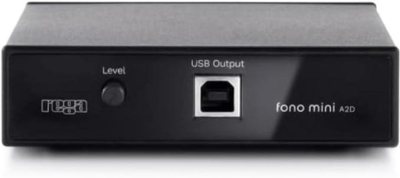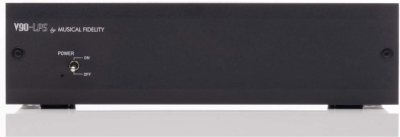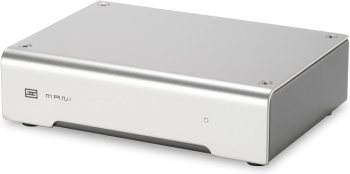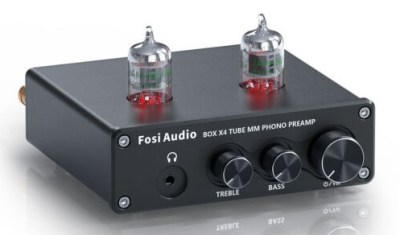The right preamp/phono stage can breathe new life into your record collection, emphasizing nuanced details and articulations in your music collection that you might have never noticed before.
Acting as the first point of amplification in the signal chain, a high-quality preamp is a necessary purchase if you want to take your listening sessions to the next level.
Today, we'll take a look at some of the best preamps widely available and find the one that'll best suit your needs and budget. We'll also learn how to identify the best preamplifiers and how you can create your unique sound system by carefully selecting the perfect preamp for your existing gear.
If you're looking for a high-quality, versatile phono pre that'll work magnificently regardless of your sound system, I'd recommend the Schiit Mani 2; however, below, you'll find plenty of options for all budgets and requirements.
Quick Summary of the Best Preamplifiers
- Cambridge Audio Alva Duo (Best Preamp for Noise-Free Reproduction)
- Rega Fono Mini A2D MKII (Best Preamplifier Overall - Runner-up)
- Moon 110LP v2 (Best High-End Preamp)
- Pyle Phono Turntable Preamp PP999 (Most Affordable Preamp)
- Musical Fidelity V90-LPS (Best Preamp Under $200)
- Schiit Mani 2 (Best Preamp Overall)
- Fosi Audio Box X4 (Best Budget Tube Preamp)
Best Preamplifiers
1. Best Preamp for Noise-Free Reproduction – Cambridge Audio Alva Duo

SPECS
- Moving Magnet: Yes
- Moving Coil: Yes
- Gain: MM: 39dB | MC: 60dB
The Cambridge Audio Alva Duo Phono Preamp is designed to satisfy the needs of both audiophiles and first-timers. Although it's not the cheapest preamp out there, it delivers superb amplitude across the sound spectrum, particularly on the lower end.
With Moving Magnet (MM) and Moving Coil (MC) input stages and gain settings optimized for both, the Alva Duo is a versatile preamp with a very efficient power consumption and auto power shutdown feature.
Performance-wise, the Alva Duo excels in sound quality, offering a balanced and neutral output that retains the warmth of vinyl. Its low THD+N ensures audio accuracy, while a notably low noise floor minimizes hiss and hum.
The preamp also features a subsonic filter for eliminating low-frequency rumble, making it user-friendly even for those new to vinyl playback. While not the most affordable preamp, the Alva Duo combines exceptional performance and thoughtful design that will upgrade your listening experience.
2. Best Preamplifier Overall - Runner-up – Rega Fono Mini A2D MKII

SPECS
- Moving Magnet: Yes
- Moving Coil: No
- Gain: Adjustable gain level
The Rega Fono Mini A2D MKII is a compact and versatile phono stage that offers great performance at a reasonable price.
Designed exclusively for moving magnet cartridges, the Rega Fono Mini ALSO has a USB output that sets it apart from the standard preamps, allowing for easy digitization of your vinyl collection.
Featuring the stunning, minimalist aluminum design Rega is known for, the Fono Mini A2D MKII can blend seamlessly into any modern audio setup.
Speaking of sound, the preamp offers a warm yet detailed audio reproduction that enhances the natural qualities of vinyl. With its low noise floor, the background remains pristine, bringing to life a vibrant and detailed representation.
Affordable, user-friendly, and sonically accurate, the Rega Fono Mini A2D MKII is a well-rounded phono stage with a touch of modern digital functionality that’ll please many music enthusiasts out there.
3. Best High-End Preamp – Moon 110LP v2

SPECS
- Moving Magnet: Yes
- Moving Coil: Yes
- Gain: 40 / 50 / 54 / 60 / 66dB
Simaudio's Moon 110LP v2 is a high-end phono stage that delivers audiophile-grade performance in a compact design.
Compatible with MM and MC cartridges and with variable gain settings between 40 and 66 dB, the Moon 110LP v2 can bring to life a refined soundstage regardless of your existing audio gear.
The sound amplified by the Moon 110LP v2 feels articulate, nuanced, and incredibly transparent. Its low-noise floor ensures minimal interference, offering a crystal-clear sonic experience and a real sense of spatiality.
It comes with adjustable impedance and capacitance settings, giving users the flexibility to fine-tune their sound according to preference and cartridge specifications.
If you’re looking for a sophisticated, customizable phono stage that offers both versatility and exceptional audio fidelity and if you can invest over $500 for a preamp, then look no further than the Moon 110LP v2.
4. Most Affordable Preamp – Pyle Phono Turntable Preamp PP999

SPECS
- Moving Magnet: Yes
- Moving Coil: No
- Gain: 34dB
The Pyle Phono Turntable Preamp is an inexpensive solution designed to make vinyl playback accessible to anyone. However, despite costing less than $20, the PP999 delivers a solid and powerful sound that can make it a crucial component of your hi-fi system.
The sound reproduction is warm and engaging, capturing the classic vinyl essence that music enthusiasts love.
One notable drawback is the lack of customizable settings, such as adjustable gain or impedance, but still, if you’re working with a limited budget, the PP999 offers fantastic value for money.
5. Best Preamp Under $200 – Musical Fidelity V90-LPS

SPECS
- Moving Magnet: Yes
- Moving Coil: Yes
- Gain: MM=40db, MC=60db
The Musical Fidelity V90-LPS is a mid-range option that punches well above its weight in terms of sound quality. It has a remarkably clean and detailed sound profile with a low noise floor, ensuring that unwanted sounds like hiss or hum won't compromise your listening experience.
The V90-LPS comes with separate MM and MC input sockets, making it ideal for those audiophiles looking for a capable, versatile phono stage that offers high-quality sound without breaking the bank.
6. Best Preamp Overall – Schiit Mani 2

SPECS
- Moving Magnet: Yes
- Moving Coil: Yes
- Gain: Adjustable gain, 33 / 42 / 48 / 60dB
The Schiit Mani 2 is a fantastic option for seasoned and beginner vinyl listeners alike and my favorite choice when it comes to high-quality, carefully designed preamplifiers.
One of its standout features is its impressive low-noise capabilities, thanks to its passive RIAA network furnished with precision film capacitors that have a 2% tolerance, along with thin-film resistors. These components ensure the preamp's precision and reliability in audio signal processing.
Adding to its versatility, the Mani 2 also provides an option for a switchable 1- or 2-pole passive low-frequency filter, enhancing its adaptability to different audio setups. This feature contributes to the preamp's remarkable transparency and fidelity.
All in all, the Schiit Mani 2 is a wonderful preamp that offers a highly adaptable and fine-tuned listening experience. It's a cost-effective yet powerful component that can elevate the performance of your audio system, regardless of your existing gear.
Recently, we also tried the excellent Schiit Audio Magni+, a headphone amplifier that enhances the volume and detail of music even when used as a preamp, so we'd definitely recommend it if you're looking for a fully balanced sound.
7. Best Budget Tube Preamp – Fosi Audio Box X4

SPECS
- Moving Magnet: Yes
- Moving Coil: No
- Gain: 39 / 42 / 45dB
The Fosi Audio Box X4 is an affordable phono preamp that targets budget-conscious audiophiles and vinyl enthusiasts who want to achieve a terrific sound without spending a fortune.
This preamp delivers an audio quality that is remarkable for its modest price point, with a warm yet clear audio profile that feels genuine, immersive, and timeless.
You can adjust the output through the Bass, Treble, and Volume control, and the 5654W vacuum tubes will evoke the vintage vibe of analog music and upgrade your listening room.
If you’re unwilling to spend more than $100 for a tube preamp, then the Fosi Audio Box X4 is your best bet.
Best Preamplifiers Buyer's Guide
There are several things to consider when choosing a new preamp: compatibility with your cartridges, the signal gain and impedance, the audio quality it delivers, your budget, the durability of the power cord and stability of the power supply, and extra features like adjustable gain or USB output.
Each of these aspects might play a crucial role in the overall performance and satisfaction you will get from your audio system, so let’s take a look at the most crucial features to look for when buying a preamp.
Compatibility (MM vs. MC Cartridges)
The first thing to identify in a preamplifier is whether it's compatible with the type of cartridge used in your turntable. There are mainly two types of cartridges: Moving Magnet (MM) and Moving Coil (MC).
MM cartridges are generally more affordable and offer good sound quality, so they're a popular choice for casual music listeners. On the other hand, MC cartridges are often found in high-end systems, offering a more nuanced sound but at a higher cost.
It's crucial to ensure that the preamplifier you choose is compatible with the type of cartridge you're using, as some phono stages are designed to work exclusively with either MM or MC cartridges, while others can accommodate both.
Signal Gain and Impedance
Signal gain and impedance have a critical impact on the performance of your preamplifier.
Gain is the amplification factor of the preamp, which is essential for driving the signal to a level that the power amplifier can use effectively. If the gain is too high or too low, it could result in distortion or insufficient volume, respectively.
Impedance is a measure of how much the preamplifier resists the electrical current. It's crucial to match the impedance of the preamplifier with that of your audio source for optimal performance. An impedance mismatch can lead to a loss of signal strength and sound quality degradation.
Sound Quality
Your objective as a music enthusiast should be to achieve superb sound quality, and the preamplifier plays a significant role in achieving this.
Although the way we experience music is highly subjective, there's no doubt a preamp should bring to life a soundscape that's detailed, accurate, articulated, and, most of all, transparent.
A high-quality preamplifier should add minimal coloration to the audio signal, allowing you to experience music in its purest form.
Many factors are involved in the accuracy of audio reproduction, but the quality of internal components like capacitors, resistors, and the overall circuit design plays a crucial role in the preamplifier's performance in this aspect.
Budget
As you probably noticed, the price range for preamplifiers can vary widely—from entry-level models costing less than $100 to high-end units that could set you back thousands.
It's important to set a reasonable budget based on the overall cost of your audio system and how critical the preamplifier is to your setup.
For beginners or those on a tight budget, a mid-range preamplifier will usually suffice. However, if you're an audiophile aiming to extract every bit of quality from your audio system, investing in a high-end model might be worth the cost.
Gain
Don’t forget to take into account the gain adjustment features when choosing a preamplifier. Some models offer adjustable gain settings, allowing you to manually tweak the amplification level.
This feature can be particularly helpful when using multiple audio sources or when trying to match levels between different components. Adjustable gain ensures that you get the best possible sound quality without introducing distortion.
Frequently Asked Questions (FAQs)
Why do I need a preamplifier?
A preamplifier bridges the gap between your audio source—such as a turntable, microphone, or digital player—and your power amplifier. It takes the low-level signals from these sources and amplifies them to a level suitable for further amplification by a power amplifier.
Furthermore, a preamplifier allows you to switch between different audio sources, control your volume, and sometimes even control tone. It helps improve sound quality and provides the necessary functionality for more complex audio setups.
What's the difference between a preamplifier and an amplifier?
Preamplifiers and amplifiers serve different functions in an audio system. A preamplifier takes low-level signals from various audio sources and amplifies them just enough to be picked up by a power amplifier.
On the other hand, a power amplifier takes this pre-amplified signal and amplifies it further to drive your speakers or headphones. In short, a preamplifier prepares the signal, while a power amplifier boosts it to produce sound through your output devices.
What types of preamplifiers are available, and how do they differ?
There are several types of preamplifiers, each designed for specific applications:
- Phono Preamplifiers: These are designed specifically for turntables. They take the very low-level signal from a turntable's cartridge and amplify it to line level, suitable for further amplification by a power amp.
- Audio/Video Preamplifiers: These are often found in home theater systems and offer both audio and video input/output options.
- Tube Preamplifiers: These use vacuum tubes to amplify the audio signal, often imparting a warm, "vintage" sound quality.
- Solid-State Preamplifiers: These use semiconductor components and are generally more reliable and cheaper than tube preamplifiers but may not offer the same warmth in sound quality.
- Digital Preamplifiers: These convert analog signals to digital form for processing and may include a range of features such as equalization, compression, and other sound enhancements.
Even a headphone amp can be used as a phono pre, so long that it has a robust output stage, so take this option into account in your audio research.
What should I consider when choosing a preamplifier for my specific needs?
When buying a preamplifier, first consider the compatibility with your existing audio gear (e.g., MM vs. MC cartridges for turntables).
Next, look into signal gain and impedance, sound quality, budget, and any additional features like adjustable gain, Bluetooth connectivity, balanced inputs, or remote control.
It's essential to match the preamplifier's specifications and capabilities with those of your audio source and power amplifier for optimal performance.
Do I need a separate preamplifier for my home theater and hi-fi system?
Some high-quality, versatile preamplifiers can serve both purposes effectively. However, preamplifiers designed specifically for home theater setups might offer features and performance benefits that hi-fi phono stages are not designed for, like multi-channel support or customizable room calibration.
Bear in mind that many AV receivers do come with built-in amplifiers, so make sure you check your sound system thoroughly before purchasing unnecessary gear.
Final Thoughts
We hope this guide will help you choose your next preamp with confidence! Don't hesitate to let us know in the comments below if we forgot to mention some of your favorites.
If you're looking for the best value for money, we recommend the Schiit Mani 2 for its transparent, realistic sound reproduction.
Alternatively, the Fosi Audio Box X4 is a fantastic option for those who are on a budget but still want to recreate the nostalgic vibe of analog sound.
Happy listening!
